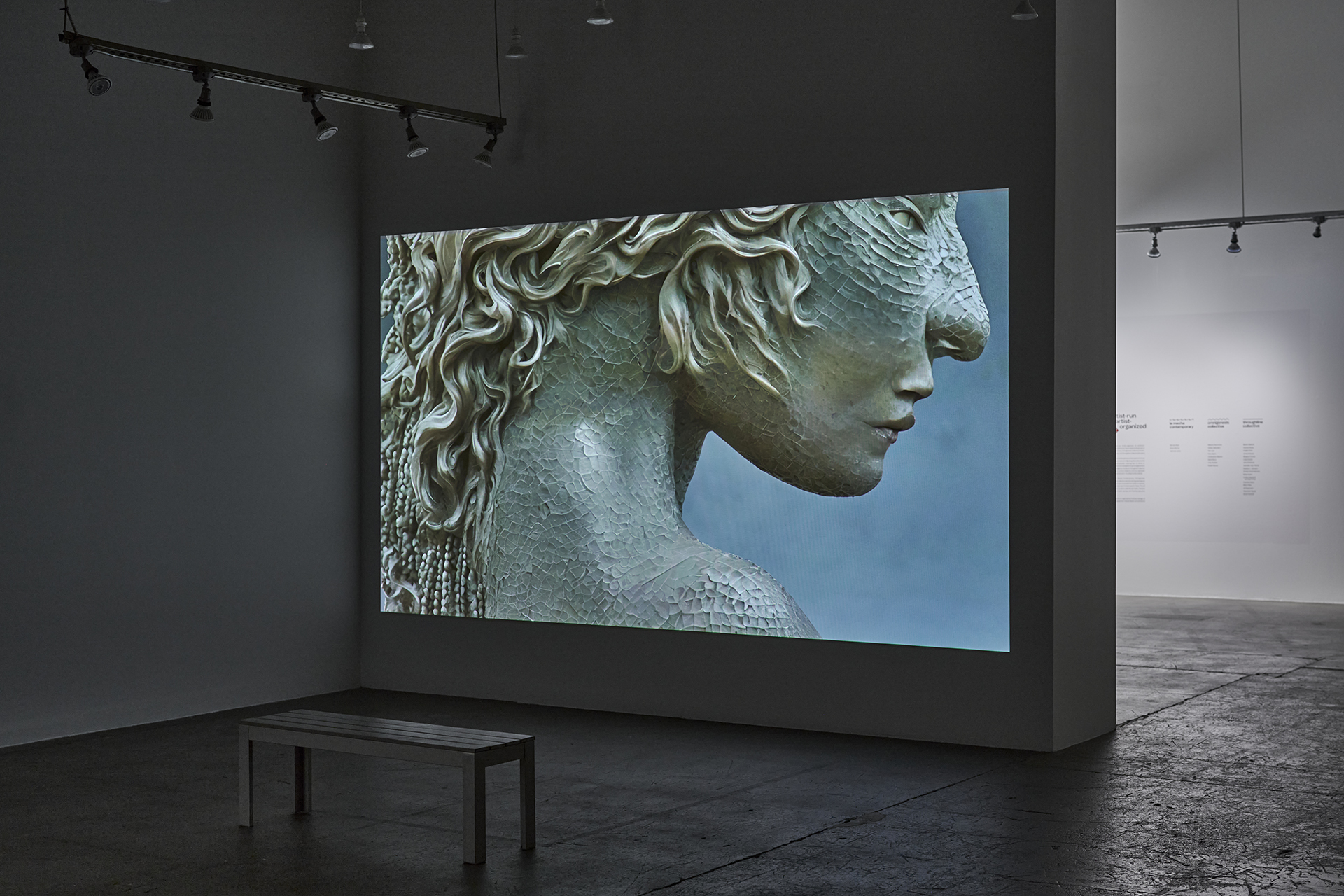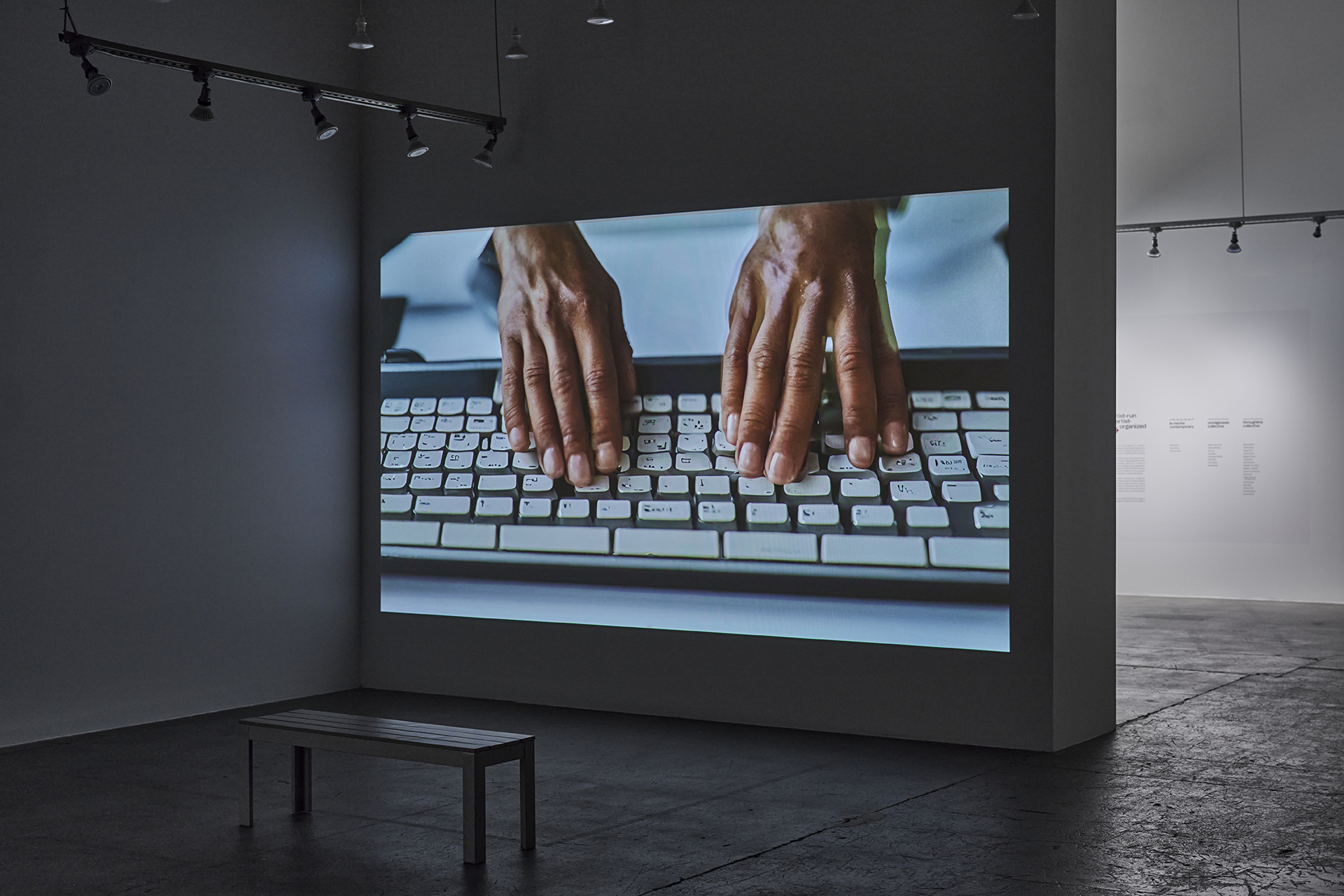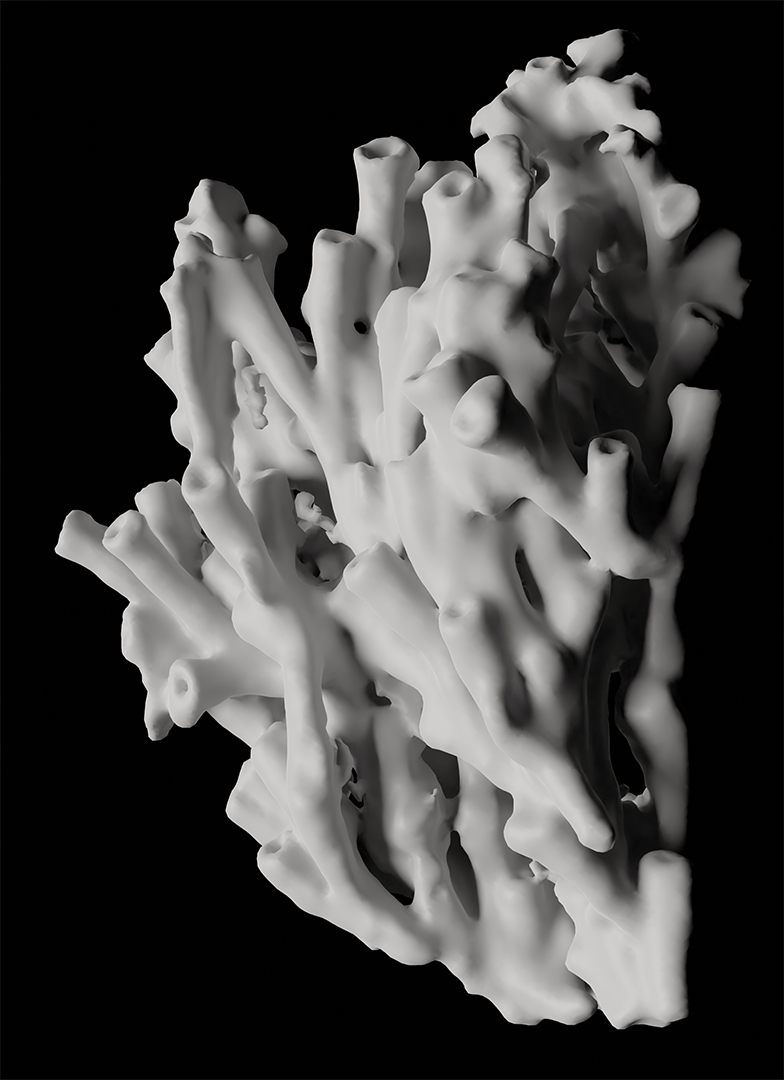
Holly Veselka (b. Houston, TX) is a new media artist and educator with an interest in emerging technologies and ecological belonging. Her recent animated videos, immersive installations, and sculptural artworks construct philosophical narratives that critically examine dominant discourses of progress, power, and adaptation.
Veselka’s work will be included in an upcoming exhibition at the Torrance Art Museum (Los Angeles, CA). She has exhibited at prominent international venues such as Fotofest (Houston, TX), Wave Hill (Bronx, NY), Artpace (San Antonio, TX), Lage Egal (Berlin, Germany), and NARS Foundation (Brooklyn, NY). Residencies and fellowships include the British Council’s X-Change program (Scotland, UK), Lawndale Art Center (Houston, TX), and ACRE (Steuben, WI). Veselka’s practice has received recognition through grants like the Puffin Foundation Artist Grant (Teaneck, NJ) and the Ruth and Harold Chenven Foundation Artist Grant (New York, NY).
Veselka’s work will be included in an upcoming exhibition at the Torrance Art Museum (Los Angeles, CA). She has exhibited at prominent international venues such as Fotofest (Houston, TX), Wave Hill (Bronx, NY), Artpace (San Antonio, TX), Lage Egal (Berlin, Germany), and NARS Foundation (Brooklyn, NY). Residencies and fellowships include the British Council’s X-Change program (Scotland, UK), Lawndale Art Center (Houston, TX), and ACRE (Steuben, WI). Veselka’s practice has received recognition through grants like the Puffin Foundation Artist Grant (Teaneck, NJ) and the Ruth and Harold Chenven Foundation Artist Grant (New York, NY).
selkie
Exhibition
Apeirophobia
Apeirophobia
Fotofest, Houston, TX, October 5-November 17, 2024
Selkie, 2024, 4:00 minutes, UHD video (web version 1080p), courtesy the artist
Selkie, a short video created with AI generated text to video and AI generated speech, considers themes of identity, interspecies friendships, objecthood, and creative acts. In the video, an artist uses AI to digitize herself into an avatar that can create the AI into the image of a seal. Through iterative design, the artist attempts to breach the confines of corporeal identity.
Selkie was included in the exhibition Apeirophobia, an exhibition of the artist collective Omnigenesis at Fotofest in Houston, TX. Omnigenesis is a self-identified network of artists, educators, writers, and practitioners invested in research and practice surrounding artificial intelligence in the arts. The group was established in 2024 through the organizational efforts of Christopher Meerdo.
Selkie was selected by Prospect Art for the upcoming exhibition Affective Territories, Alternate Belongings in Los Angeles, CA and Lisbon, Portugal.
![]()
![]()
Selkie was included in the exhibition Apeirophobia, an exhibition of the artist collective Omnigenesis at Fotofest in Houston, TX. Omnigenesis is a self-identified network of artists, educators, writers, and practitioners invested in research and practice surrounding artificial intelligence in the arts. The group was established in 2024 through the organizational efforts of Christopher Meerdo.
Selkie was selected by Prospect Art for the upcoming exhibition Affective Territories, Alternate Belongings in Los Angeles, CA and Lisbon, Portugal.


Selkie installation shots, 2024, images courtesy of FotoFest.
rocky futures
Artist Performance
Karst: A Landscape of Mineral and Water
Centre for Mobilities Research, Lancaster University, Cremore, UK and T2M, Seoul, Korea, 2023
This video was created for and presented as part of Veselka’s artist performance during Rocky Futures, a collaboration between the Rocky Climates collective and the Centre for Mobilities Research at Lancaster University (Cemore).
“More substantive, machine-driven mobilities are part of the immense operations to extract lithic matter that were supercharged during the industrial revolution. Such extractions are now recognised as fundamental to the climate crisis that we confront. Holly Veselka deploys virtual mapping, 3-D modeling and simulated aerial photography to explore how the spectacular Karst limestone landscape at San Marcos, Texas, is being devastated by extensive mining for lime for concrete production, erasing its distinctive features and effacing the rich myths that focus upon this poetic and mysterious permeable realm, with its underworlds and channels. Veselka seeks to reintroduce a sense of mystery through the glitches and absences generated through photogrammetry.” — Tim Edensor, Moving Rocks, Rocks on the Move, 2024
Rocky Climates is an artists’ network formed by Rebecca Birch, Sarah Casey, and Jen Southern that brings together artists and researchers who are concerned with mobilities and instabilities (temporal, spatial, cultural, environmental) of rocky landscapes in uncertain times.
Rocky Futures presented the work of 14 artists in a series of 9 live Zoom events at the 2023 Global Humanities Conference (GMHC) and the Annual Conference of the International Association of The History of Transport, Traffic and Mobility (T2M) in Seoul, Korea on October 26th and 27th, 2023.
“More substantive, machine-driven mobilities are part of the immense operations to extract lithic matter that were supercharged during the industrial revolution. Such extractions are now recognised as fundamental to the climate crisis that we confront. Holly Veselka deploys virtual mapping, 3-D modeling and simulated aerial photography to explore how the spectacular Karst limestone landscape at San Marcos, Texas, is being devastated by extensive mining for lime for concrete production, erasing its distinctive features and effacing the rich myths that focus upon this poetic and mysterious permeable realm, with its underworlds and channels. Veselka seeks to reintroduce a sense of mystery through the glitches and absences generated through photogrammetry.” — Tim Edensor, Moving Rocks, Rocks on the Move, 2024
Rocky Climates is an artists’ network formed by Rebecca Birch, Sarah Casey, and Jen Southern that brings together artists and researchers who are concerned with mobilities and instabilities (temporal, spatial, cultural, environmental) of rocky landscapes in uncertain times.
Rocky Futures presented the work of 14 artists in a series of 9 live Zoom events at the 2023 Global Humanities Conference (GMHC) and the Annual Conference of the International Association of The History of Transport, Traffic and Mobility (T2M) in Seoul, Korea on October 26th and 27th, 2023.
the rig
Exhibiton
Mareel Feature Space
Mareel Feature Space
Shetland Arts, Lerwick, Scotland, May 1–June 30, 2023
The Rig, 2023, 5:37 minutes, 4K video (web version 1080p), courtesy the artist
Veselka visited Shetland in May 2022 and became interested in the decommissioning of the Ninian Northern offshore platform at Dales Voe and the tremendous amount of marine life that had grown on the rig during its forty years of operation. In decommissioning process, this life had been killed, and the site was a graveyard. But the fact of life on these structures was also a symbol of hope. Visually, petrochemical infrastructure is often used as a symbol of climate change and environmental disaster. But the ecosystem living on the rig before it was decommissioned became a different type of symbol—one that represents life’s resilience.
Thinking about the opposing themes of energy, environmental destruction, and resilience, Veselka created this 3D animated video to experimentally represent what would happen to a rig if it outlived its petrochemical purpose and was allowed to remain in the sea as a sanctuary for living creatures.
This video was exhibited in a solo exhibition at Shetland Arts in Lerwick, Scotland.
To hear more about the artist's experience in Shetland, please listen to her interview with Chris Bonfiglioli on the Coastal Knowledge Podcast of the Young Academy of Scotland: https://www.youngacademyofscotland.org.uk/news/podcast-episode-9-coastal-climate-change-art/
More information on the project: X-CHANGE: Artist Residency & Exchange | Shetland Arts
Thinking about the opposing themes of energy, environmental destruction, and resilience, Veselka created this 3D animated video to experimentally represent what would happen to a rig if it outlived its petrochemical purpose and was allowed to remain in the sea as a sanctuary for living creatures.
This video was exhibited in a solo exhibition at Shetland Arts in Lerwick, Scotland.
To hear more about the artist's experience in Shetland, please listen to her interview with Chris Bonfiglioli on the Coastal Knowledge Podcast of the Young Academy of Scotland: https://www.youngacademyofscotland.org.uk/news/podcast-episode-9-coastal-climate-change-art/
More information on the project: X-CHANGE: Artist Residency & Exchange | Shetland Arts
x-change
Residency and Exchange Program
Shetland Islands, Scotland, 2021/22

3D model of a cold water coral found on the jacket of the decommissioned Ninian Northern offshore oil platform
X-CHANGE is a partnership between Shetland Arts and McNay Art Museum in San Antonio, Texas.
It is an artist residency / exchange opportunity exploring the extraction economy and the environment, funded by The British Council and Creative Scotland with support from Art Fund (UK) and Association of Art Museum Curators (US).
The two diverse geographies of Texas and Shetland have been heavily exploited for their natural resources. Shetland - the archipelago at the most northerly tip of the UK – was made rich by the oil and gas processing industry in the 1970s and thrives off the oil and gas fields that skirt it. It now looks to renewables for its future with construction underway on what will be the largest onshore wind farm in the UK. The oil-rich state of Texas has a longstanding and complex relationship between its natural reserves and the gargantuan industry built around it. It also has the largest onshore windfarm in the world.
The two selected artists are Shetland based filmmaker and writer Shona Main, and Texas-based conceptual artist, Holly Veselka.
It is an artist residency / exchange opportunity exploring the extraction economy and the environment, funded by The British Council and Creative Scotland with support from Art Fund (UK) and Association of Art Museum Curators (US).
The two diverse geographies of Texas and Shetland have been heavily exploited for their natural resources. Shetland - the archipelago at the most northerly tip of the UK – was made rich by the oil and gas processing industry in the 1970s and thrives off the oil and gas fields that skirt it. It now looks to renewables for its future with construction underway on what will be the largest onshore wind farm in the UK. The oil-rich state of Texas has a longstanding and complex relationship between its natural reserves and the gargantuan industry built around it. It also has the largest onshore windfarm in the world.
The two selected artists are Shetland based filmmaker and writer Shona Main, and Texas-based conceptual artist, Holly Veselka.

3D model of an oil drum protesting a perceived ban on new offshore drilling off the coast of Scotland